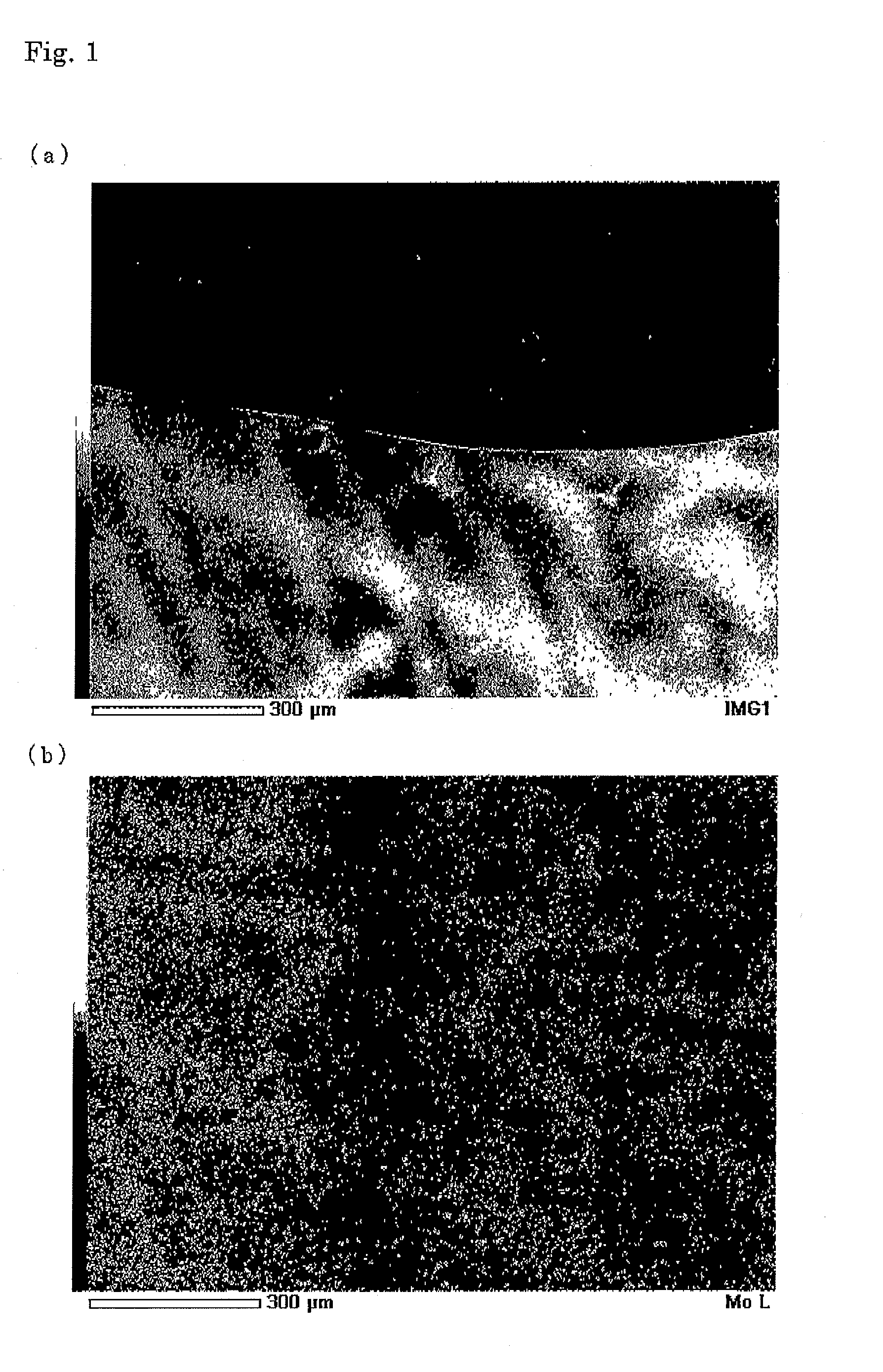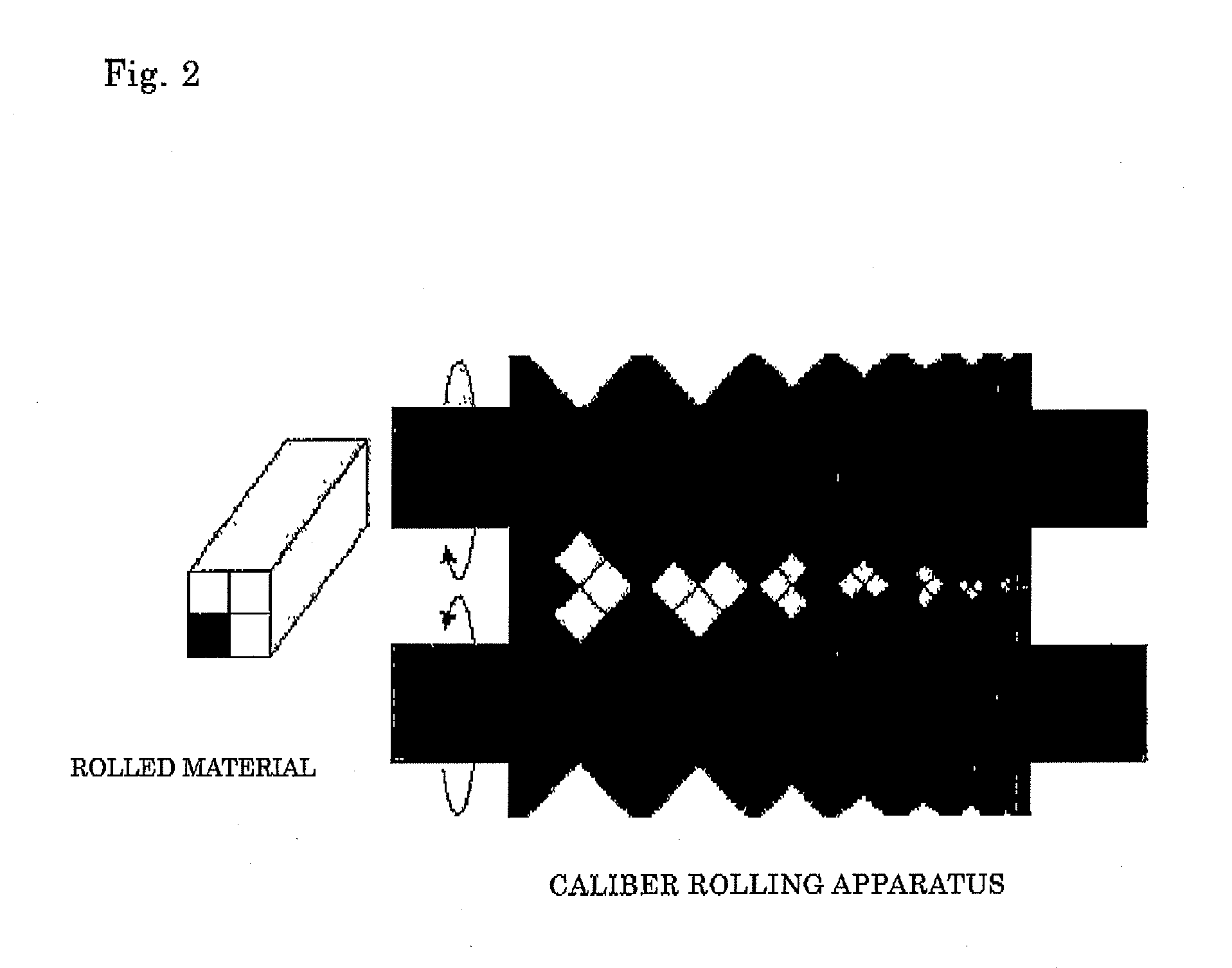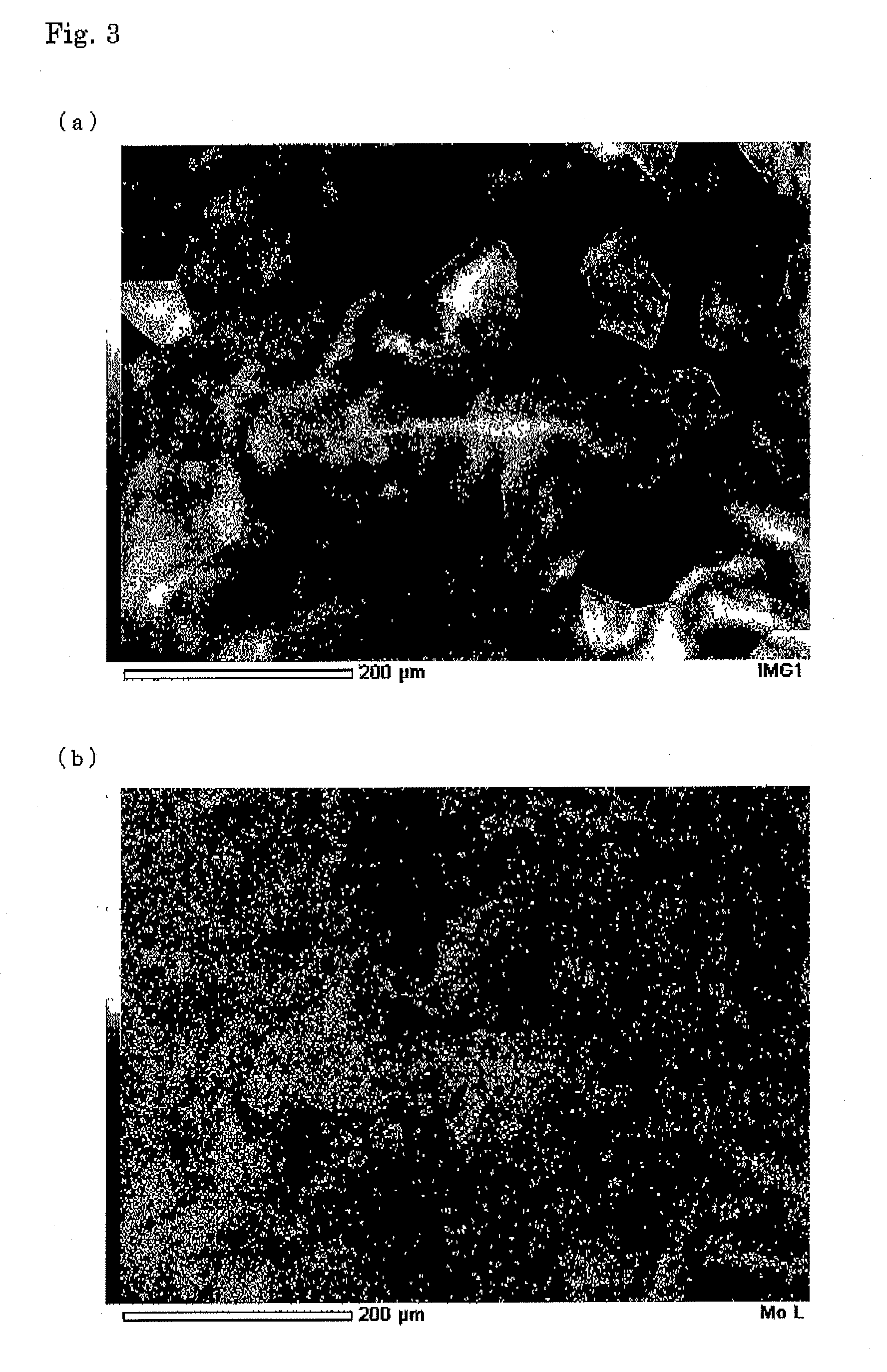Ti-Mo ALLOY AND METHOD FOR PRODUCING THE SAME
a technology of mo alloy and mo alloy, which is applied in the field of mo alloy, can solve the problems of reducing ductility at room temperature, reducing ductility, and resisting crevice corrosion, and achieves excellent formability, high strength, and high corrosion resistan
- Summary
- Abstract
- Description
- Claims
- Application Information
AI Technical Summary
Benefits of technology
Problems solved by technology
Method used
Image
Examples
example 1
[0097]A Ti-12 mass % Mo ingot (diameter: 69 mm; weight: 1.2 kg) was produced using a cold crucible levitation melting (CCLM) apparatus. The Mo concentration distribution in the produced ingot was examined using a backscattered electron image (BEI) and an energy dispersive X-ray spectroscopy (EDS) image obtained by means of a scanning electron microscope (SEM). As a result, as shown in FIG. 1, a segregation structure in which the region having a high Mo concentration is present in a dendritic form having a width of 30 to 50 μm was obtained.
[0098]The above-produced ingot was subjected to hot forging at 1,000° C. and hot caliber rolling at 650° C. to form an 11.8 mm square rod, and then the resultant rod was subjected to solution heat treatment at 800° C. for one hour, followed by water cooling. The Mo concentration distribution in the material obtained after the solution treatment was examined using a BEI and EDS. As a result, as shown in FIG. 3, a structure in which the Mo segregatio...
example 2
[0106]In Example 2, the results obtained with respect to the Ti-18 mass % Mo alloy are shown. Also in Example 2, by subjecting the material to the same processing and heat treatment as in Example 1 (hot forging at 1,000° C., grooved-roll hot rolling at 650° C., solution heat treatment at 900° C. for one hour, and water cooling), as shown in FIG. 11, an Mo segregation structure in a swirly form (change in Mo amount: 3.5 mass %) is obtained in the plane perpendicular to the rolling direction, and, as shown in FIG. 12, by virtue of the aging treatment at 450° C. for one hour, a structure in which the microhardness is locally changed can be obtained.
example 3
[0108]The material obtained in Example 1 after the solution heat treatment and water cooling was subjected to aging treatment at a temperature of 200° C. for 10 hours, and, from the resultant material, two specimens for measurement (specimen A and specimen B) were prepared, and, in both the specimens, a segregation structure in a swirling form was clearly observed. With respect to each of the specimens, a deformation before breakage (total elongation) at room temperature was measured and the obtained values were 23% (specimen A) and 25% (specimen B), and a tensile strength at room temperature was measured and the obtained values were 1,010 σ / MPa (specimen A) and 1,020 σ / MPa (specimen B).
PUM
| Property | Measurement | Unit |
|---|---|---|
| temperature | aaaaa | aaaaa |
| temperature | aaaaa | aaaaa |
| width | aaaaa | aaaaa |
Abstract
Description
Claims
Application Information
 Login to View More
Login to View More - R&D
- Intellectual Property
- Life Sciences
- Materials
- Tech Scout
- Unparalleled Data Quality
- Higher Quality Content
- 60% Fewer Hallucinations
Browse by: Latest US Patents, China's latest patents, Technical Efficacy Thesaurus, Application Domain, Technology Topic, Popular Technical Reports.
© 2025 PatSnap. All rights reserved.Legal|Privacy policy|Modern Slavery Act Transparency Statement|Sitemap|About US| Contact US: help@patsnap.com



